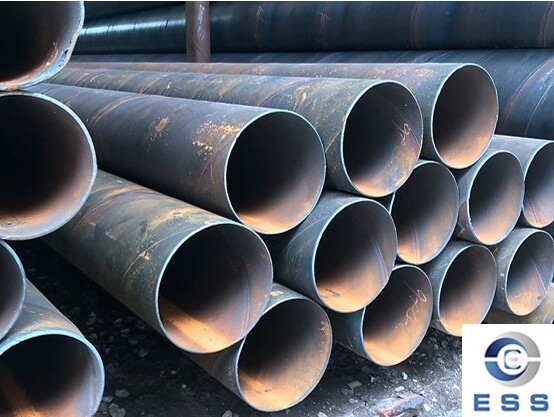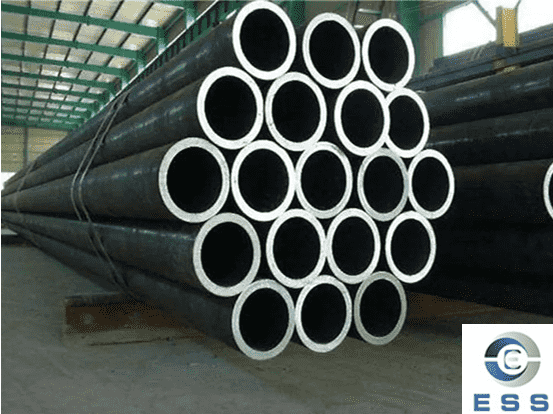
Carbon
seamless steel pipe is a long strip of steel with a hollow cross-section
and no seams around them. Due to its unique manufacturing process and excellent
performance, it is widely used in various fields such as petroleum, chemical
industry, electricity, boilers, ships, etc. The model and parameters of
seamless steel pipes are key factors affecting their use effect. Therefore, in
the process of purchase and use, these factors must be deeply understood and
analyzed.
Models of carbon seamless steel pipes
The models of carbon seamless steel pipes
are mainly classified according to factors such as their manufacturing process,
purpose, and size specifications. Common models include 10#, 20#, 35#, 45#,
16Mn, etc. These models represent different chemical compositions and
mechanical properties, thus meeting the use needs of different fields.
Specifically:
1. 10#, 20# seamless steel pipes
Mainly used for conveying fluids, such as
water and oil. Its manufacturing process is simple and the cost is low, but the
strength and corrosion resistance are relatively low. It is also used in some
low-pressure hydraulic
piping systems or temporary fluid delivery pipelines.
2. 35#, 45# seamless steel pipe
It has high strength and hardness, and is
suitable for occasions with high pressure and load, such as oil drilling,
bridge construction, etc.
3. 16Mn seamless steel pipe
It is a low-alloy high-strength structural
steel pipe with good comprehensive mechanical properties and welding
properties. It is widely used in shipbuilding, automobile manufacturing,
construction engineering and other fields.
Parameters of carbon seamless steel pipe
The parameters of carbon seamless steel
pipe mainly include outer diameter, wall thickness, length and related
technical indicators. These parameters directly affect the performance and
price of steel pipe. The following are some key parameter descriptions:
1. Outer diameter and wall thickness
The outer diameter and wall thickness are
important factors in determining the pressure bearing capacity of steel pipe.
Generally speaking, the larger the outer diameter and the thicker the wall
thickness, the stronger the pressure bearing capacity of steel pipe. But at the
same time, it will also increase the weight and cost of steel pipe. In the
application of boiler
tubes and heat
exchanger tubes, the selection of outer diameter and wall thickness is
particularly critical according to the internal pressure and heat transfer
requirements. Therefore, it is necessary to weigh according to actual needs
when purchasing.
2. Length
The length of seamless steel pipe is
usually customized according to customer needs. Common lengths are 6 meters, 9
meters, 12 meters, etc. In practical applications, cutting or welding can also
be performed as needed.
3. Technical indicators
Including tensile strength, yield strength,
elongation, impact toughness, etc. These indicators reflect the mechanical
properties of the steel pipe and its ability to resist external forces. When
purchasing, attention should be paid to whether these indicators meet the
requirements of national or industry standards.
Classification of carbon seamless steel
pipe implementation standards
The implementation standards of carbon
seamless steel pipes are mainly divided into international standards, national
standards and industry standards. Among them, international standards such as
ASTM A106 and A53 are globally applicable; industry standards are formulated
according to specific application areas, such as petroleum, chemical industry,
electricity, etc.
1. ASTM A106
This is a seamless carbon
steel pipe for high temperature use, with good high temperature oxidation
resistance and high endurance strength. It is mainly suitable for high
temperature and high pressure oil and natural gas pipelines.
2. ASTM A53
This is a general seamless carbon steel
pipe, divided into two grades, A and B. Grade A is suitable for low pressure
fluid transportation, and grade B is suitable for higher pressure fluid
transportation.
3. GB/T 8163
This is a seamless steel pipe for fluid
transportation, which has good corrosion resistance and high mechanical
properties. It is mainly suitable for conveying fluids such as water, oil, and
gas.
Purchase recommendations and application
precautions
When purchasing carbon seamless steel
pipes, it is recommended to consider the following aspects:
1. Clarify the use requirements and
occasions, and choose the appropriate model and specifications.
2. Pay attention to product quality and
technical indicators to ensure that they meet the requirements of relevant
standards.
3. Compare prices and services, and choose
reputable suppliers for cooperation. During use, attention should also be paid
to regular inspection and maintenance to ensure the safe operation and service
life of the steel pipe.
Summary
In summary, the model, parameters and
implementation standard grade of carbon seamless steel pipes are the key
factors affecting their use effect. By deeply understanding and analyzing these
factors, we can better guide our purchase and application work and provide
strong support for the development of various fields.
Read more: Seamless Carbon Steel Pipe













 Eastern Steel Manufacturing Co.,Ltd not only improve product production and sales services, but also provide additional value-added services. As long as you need, we can complete your specific needs together.
Eastern Steel Manufacturing Co.,Ltd not only improve product production and sales services, but also provide additional value-added services. As long as you need, we can complete your specific needs together.










